
(Click here for 7 Tips on How to Improve Reading Comprehension and Speed for Your Child)
Reading comprehension is a major issue for many 4th to 12th graders.
- We have assessed many students whose reading comprehension is 2, 3, 4 and even 5 years below grade level
- Too often their reading speed is so slow, that it is tortuous for them to read
- The good news is that with the right help, reading comprehension can be improved by 2, 3 and even 4 grade levels within months. Their reading speed can often be improved by 50 to 100%.
For too many smart and even gifted students, their reading comprehension is often at grade level, but two to three years below their peers. Their reading speed is often slow. The good news is that:
- Their reading comprehension can often be improved by 2 or 3 grade levels within 6 months
- Their reading speed can be improved by 50 or 100%
- This can dramatically improve their:
- Grade point average
- SAT and/or ACT scores
- Chances of getting into the college of their choice
These students are often either right brain neurodivergent learners and/or they have a visual processing issue. Many assessments miss these items or do not leverage a student’s ability to learn best when they see and experience information and/or miss a visual processing issue.
We strongly recommend sitting down with your child and completing these two screening tools.
Click here to see if your child is a right-brain neurodivergent learner.
Click here to see if your child has a visual processing issue.
Your child’s answers may surprise you and allow you to leverage the insights you become aware of.
Below are the 7 Tips on How to Improve Reading Comprehension and Reading Speed for your child.
Why and How to Improve Reading Speed and Reading Comprehension for 4th to 12th Graders
- Find out what your child’s present level of reading speed and reading comprehension are and what is their present Grade Point Average and SAT scores, if appropriate
- How would it change your child’s life if they improved their reading comprehension by 2, 3 or even 4 grade levels over the next 6 months? How would it help your child if they improved their reading speed by 50 to 100%? How would it effect:
- The classes they are in and their grade point average
- Their performance on standardized tests
- Homework time and stress
- Prospects for getting into the college or university of their choice
- Chances of getting a $20,000 or $30,000 scholarship
- Have a positive, open conversation with your child about how they feel. Listen to their fears, their ideas of what they want and what they like. Give positive support and together make a list of ideas that they want help on. As you work on this list – take note of what strategies work and what doesn’t work. Make as many activities hands-on or active as possible.
Note, discuss this with your child and if appropriate, create a WHY Document, why you want this and why your child wants it.
4. Strongly consider getting an outside evaluation that assesses for:
-
- How your child learns best.
- Their strengths and challenges
- Their present level of reading speed and reading comprehension
The two most common items that are missed are:
a- If your child is a right-brain neurodivergent learner who learns best when they see and experience information.
b- Does your child have a visual processing issue, where they skip words and lines when reading, process information slowly and make too many stupid mistakes in math tests,
We recommend sitting down with your child and completing these two screening tools:
Click here to see if your child is a right-brain neurodivergent learner.
Click here to see if your child has a visual processing issue.
- Set BOLD Goals for your child. Let’s say your child is presently 2 years behind in reading comprehension. Consider a goal to get your child back to grade level within months. We recommend including a non-academic goal in an area of interest to your child. This might be in sports, music, martial arts or another area of interest to your child.
6– Follow through for maximum results.
7- Being consistent is key! These kids need structure and a visual schedule to follow.
3D Learner can help with all 7 steps.
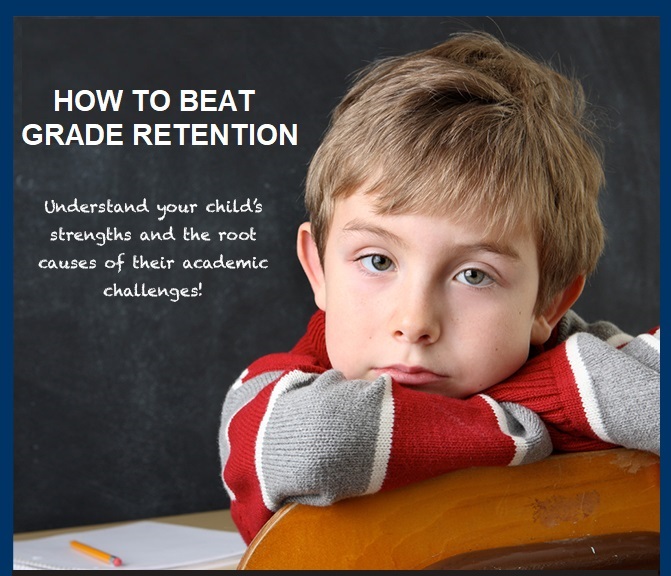
Our goal is to provide you with a framework that will allow you to help your child beat third grade retention, improve their reading comprehension and to be well prepared to succeed in 4th grade and beyond. We believe that parents have the opportunity to really make the difference.
The video below is on “How to Beat Third-Grade Retention with Transformational Strength-based Parenting. Unlike traditional approaches, our focus is on:
- How to beat third-grade retention and
- How to improve your child’s reading comprehension to grade level or above within months, where possible
- Boosting your child’s self-esteem and to ignite an even greater love for learning
- How to help you to be an even better informed, empowered and proactive parents who make the difference for your child
As discussed in the video, many students at risk for third-grade retention are either a right brain learner or a neurodivergent learner. They often have a visual processing issue.
Click below for two screening tools we recommend you do with your child. Their answers may surprise you.
Click here to see if your child is a right-brain neurodivergent learner.
Click here to see if your child has a visual processing issue
Give us a call at 561-361-7495 or click here to
schedule a “How to Beat Third Grade Retention” conversation.
Below are our recommended 7 steps on how to beat third grade retention.
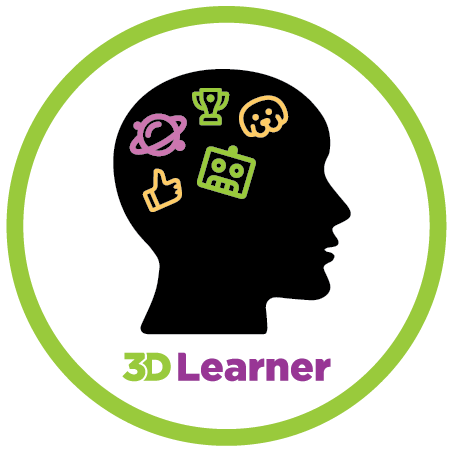
7 Steps on How to Beat Third Grade Retention
1- Work with your child’s teacher – school to:
a. Find out from your child’s teacher where your child is at and what can be done with the teacher and you working together. Be sure to find out what their present level of reading fluency and reading comprehension are.
b. If your child does not have an Individualized Education Plan ((IEP), request one – click here to read more about the process and how to request a special education evaluation.
c. If they have an IEP, consider asking for an Emergency IEP to review the goals, programs, and support to get your child as close to grade level as possible in reading comprehension and to be promoted.
d. Understand how your school system and state will allow your child to be promoted. For example, this document provides the options for promotion in the state of Florida.
e. Find out what state scholarship might be available for private tutoring. In Florida, if your child is in Kindergarten to 5th grade in a public or charter school and has a math or reading deficiency, you can apply for the $1250 New World Scholarship.
2- Strongly consider getting an outside evaluation that identifies:
a. How your child learns best.
b. Their strengths and challenges
c. Your child’s present level of reading fluency and reading comprehension. Be sure a language assessment is a part of the evaluation.
Click here to see if your child is a right-brain neurodivergent learner.
Click here to see if your child has a visual processing issue.
Complete each with your child – their answers may surprise you.
3- Set BOLD Goals for your child. Let’s say your child is presently 1.5 years behind in reading comprehension. Consider a goal of getting your child back to grade level within 5 months. Be sure to include a non-academic/school goal. Something they like or want to get better at.
4- Have a positive, open conversation with your child about how they feel. Listen to their fears, their ideas of what they want and what they like. Give positive support and together make a list of ideas that they want help on. As you work on this list – take note of what strategies work and what doesn’t work. Make as many activities hands-on or active as possible.
5- Choose the right partner for your child and you. 5 things to consider:
-
- Have they helped kids like yours to be far more successful
- Will they identify and leverage your child’s strengths
- Will they identify and address your child’s challenges
- Will they give you a program tailored to your child’s needs and your goals
- Will they help you to be the coach and advocate your child needs
6– Follow through for maximum results.
7- Being consistent is key! These kids need structure and a visual schedule to follow.
3D Learner can help with all 7 steps.
Give us a call at 561-361-7495 or click here to schedule a
“How to Beat Third Grade Retention” conversation.
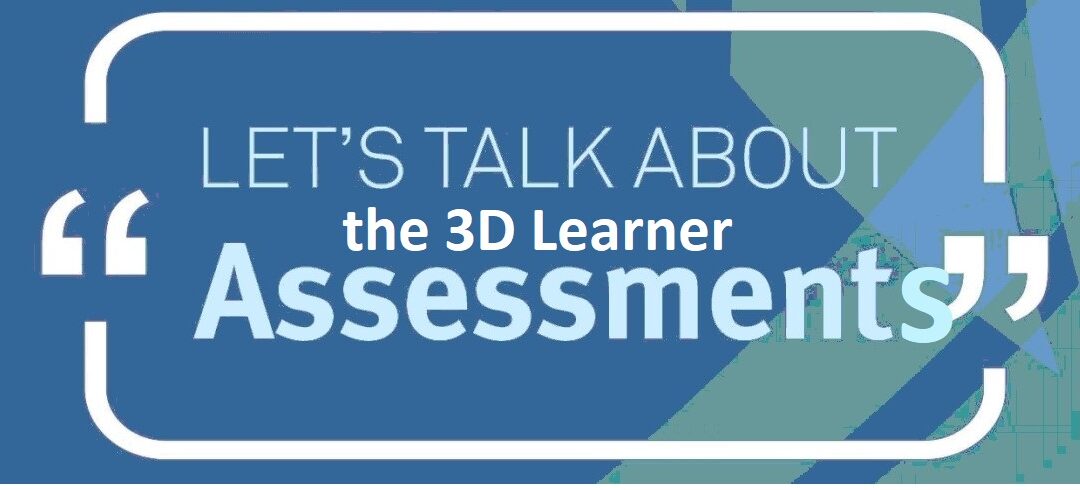
Most smart struggling students are right brain neurodivergent learners.
Closing the Read Gap often focuses on dyslexia and reading fluency. We believe these are two critical issues, but we believe that improving reading comprehension is the key goal that is needed to succeed in life.
Our daughter went through years of dyslexia training, but in 8th grade her reading comprehension was still 3 years below grade level, even with a 119 IQ.
When we were told by her guidance counselor that our daughter was not college material, my husband Mark turned to my daughter and asked her, “What do you want to be when you grow up?” Without batting an eyelash, she responded, “The teacher I never had”. The guidance counselor responded, “Honey you can be a teacher’s aide”.
At that moment I became a mom on a mission. Leveraging my Master’s in Education and a commitment to help my child succeed, I did my research.
I discovered that my daughter was a right brain kinesthetic learner, who learned best when she saw and experienced information. I then developed what has become known as the 3D Learner Program ® that helped my daughter improve her reading comprehension 4.2 grade levels in 7 months. She later earned her Master’s in Education from the University of Florida. She truly became the teacher she never had.
 The icing on the cake came in August 2024 when our daughter earned her Doctorate in Education from the University of Florida
The icing on the cake came in August 2024 when our daughter earned her Doctorate in Education from the University of Florida
 Over the last 28 years, we have helped thousands of students succeed, with a hands-on visual program that recognizes that:
Over the last 28 years, we have helped thousands of students succeed, with a hands-on visual program that recognizes that:
– Most smart struggling students are right brain kinesthetic learners, who can close the reading fluency and reading comprehension gaps much faster when one leverages their strengths and identifies and addresses their challenges.
– Almost 75% of the students we have assessed have a significant visual processing issue. They might be able to see well, but their eyes do not work effectively together. This results in their skipping words and/or lines when reading. See this video for how one of our student’s eyes tracked before and after our intervention.
– Many have problems with executive function challenges.. They frequently have trouble paying attention to that which is boring or frustrating. Working memory and processing speed issues are also common
– Anxiety issues are frequently present
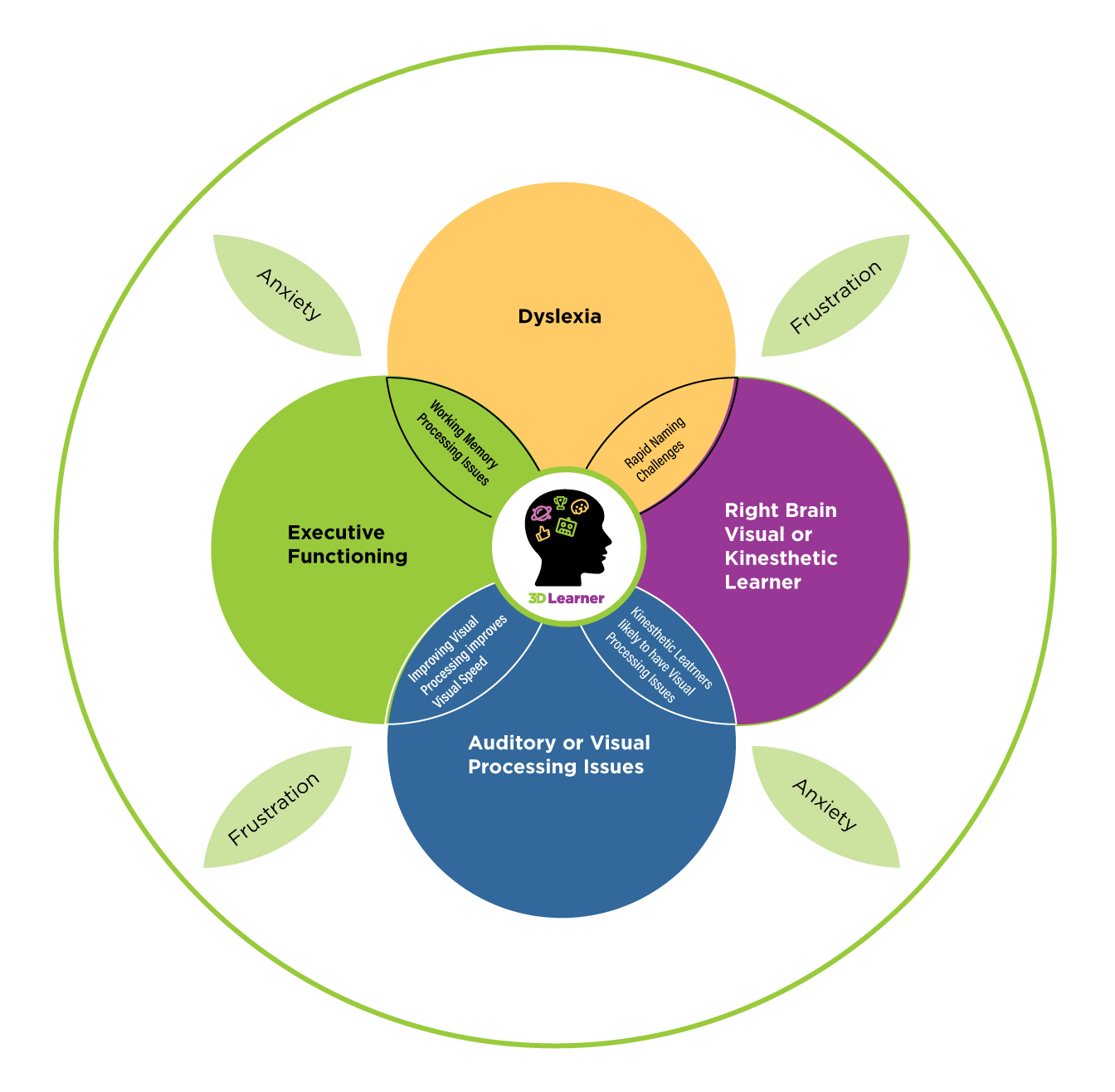
Many smart struggling students are right brain, visual or kinesthetic learners, who often, but not always have visual processing, executive function, dyslexia and/or anxiety challenges
To help you to better understand whether your child is a right brain kinesthetic learner and whether they have a visual processing, attention and/or anxiety challenge, we have developed three different assessment tools you can use. We strongly urge you to answer these questions with your child, their answers may surprise you.
Click here to download:
– Does my child appear to have an attention and/or anxiety challenge?
If you complete these three screening tools and scan them, you can email them to me at parents@3dlearner.com and schedule a no cost consult — two or more days later. To schedule your consult, you can either call us at 561-361-7495 or click here to schedule a Close the Reading Gap Conversation.
We also offer a comprehensive assessment that includes:
- The Structure of Intellect Assessment ® that shows how your child learns best, where they are strong and where they struggle. One principal commented that this was the best assessment they had ever used. She asked her Special Education Specialist why they had stopped using it. The answer was that the SOI does not label a child, which is what the school needs to do to qualify a student for special education. What it is good for is tailoring a program to help a child succeed, which is why 3D Learner uses it.
- For third graders and above we include the Mindprint Assessment ® that assesses Executive Function Skills. This tool was developed by a team at the University of Pennsylvania. It identifies strengths and challenges related to attention, working memory, processing speed and flexible thinking.
- A Core Dyslexia Assessment.
- A reading comprehension assessment.
 This assessment can be done online.
This assessment can be done online.
For the right brain neurodivergent learner, our comprehensive assessment will identify how your child learns best, where they are strong and where they struggle, whether they appear to have a visual or auditory processing issue, whether they have dyslexia, and what their present level of reading comprehension is. It often boosts a student’s self-esteem and allows us to tailor a program to help your child succeed.
For any parent who attends the Closing the Reading Gap Program and who invests in our Comprehensive Assessment by November 30th, 2024, 3D Learner will offer a 20 percent discount on our comprehensive assessment.

Reading comprehension, reading speed and/or math, especially algebra, are major issues for many students in grades 7 to 12.
If you have a child who is a lot smarter than present results would indicate, the three keys to your child’s success are to recognize that:
- You want to reject the status quo.
- Recognize there is an opportunity to:
- Increase your child’s reading comprehension – often by 2, 3 or even 4 grade levels in 6 months
- Understand that math is much more dependent on understanding the question than it was in our time. Many students who are getting Cs, Ds and Fs are capable of getting As and Bs
- Reading speed and visual processing issues are often related. If there is a visual processing issue it is important to address. If there is a reading speed issue it is often possible to increase your child’s reading speed by 50 to 100%, while increasing reading comprehension by 2, 3 or even 4 grade levels
- As a parent, your role in rejecting the status quo, recognizing the opportunity and in partnering with the right professionals is mission critical
If you would like to have a conversation on these or other matters,
call us at 561-361-7495.
Reading Comprehension and Math Problems Impact Most of Our Students
We were surprised when we learned about a longitudinal study that showed that over 60 percent of the students with disabilities in middle and high school were 3 or more years below grade level in their reading comprehension and math, and many were further behind. This happens to many kids, even from the best families.
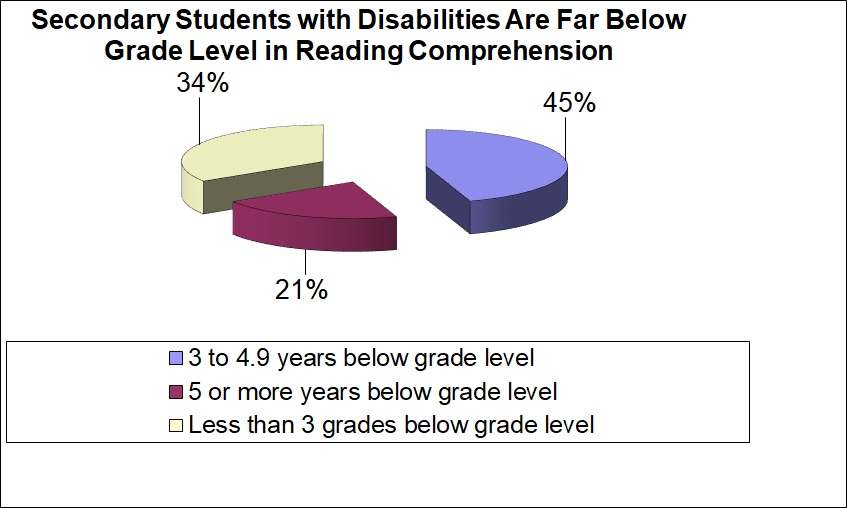
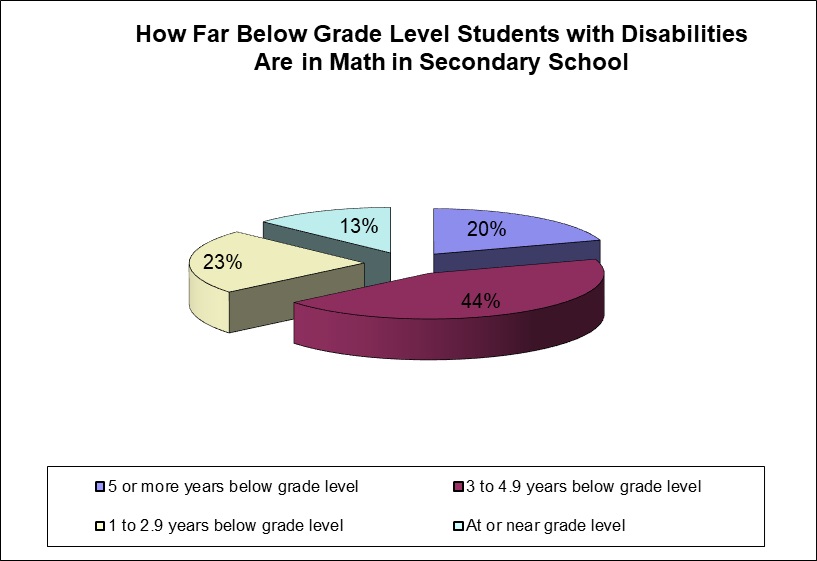
What is even more surprising is how many smart and even gifted students:
- Have reading comprehension levels well below what you would expect
- Read slowly – sometimes as slow as 100 words per minute
- Struggle with math problems, and really struggle on the SAT and ACT tests
‘The good news is that with the right program these students, with the right help, can often:
- Improve their reading comprehension 2, 3 and even 4 grade levels within 6 months
- Increase their reading speed by 50% and 100%
- Improve their math grades from Cs. Ds and Fs to As and Bs
- Significantly improve their SAT and ACT scores and their GPAs
The three keys to their success are:
- Parents choosing to make the difference
- Finding the right professionals who teach the way your child learns best, will identify and address their challenges and know how to engage and motivate your child
- Getting your child to want to succeed. With teenagers, they need to want it. At 3D Learner, we often play a part in motivating the student
Get It Right – 3 Examples of How Parents Made The Difference
Nate was struggling with grades, reading comprehension and his reading speed was an issue. The parents certainly wanted to Get It Right. The challenge was how to get him interested in improving. We had that conversation and he realized if he improved his reading speed and reading comprehension, it would improve his grades and give him more time for what he loved to do. In 4 months, he was able to improve his reading comprehension 4 grade levels, increase his reading speed by 80% (i.e. from 200 to 360 words per minute) and he had more time to work on his art projects. Later, he earned a full scholarship to college.


Eric was a 7th grader who was having behavior challenges, his reading was 4 years below grade level and his batting average was now below 300. His parents rejected the status quo and wanted help, but Eric was a reluctant student. We shifted the conversation to improving his baseball average from 290 to 350 and his home runs from 1 to 5. He was excited. With our help, he improved his reading comprehension by 4 grade levels, and was now doing well in regular classes. He was delighted to see his batting average go from 290 to 405 and his homerun production from 1 to 9.
The 3D Learner Origin Story
Our daughter faced a real challenge with her reading comprehension being 3 years below grade level and her grade point average at 2.7 well below her potential. When we were told she was not college material, because of her reading comprehension, her mother, Mira Halpert, became a Mom on a Mission”. Mira, who has her Masters in Education from the University of Michigan, discovered our daughter was a right brain learner – who learned best when she saw and experienced information, Mira developed what became known as the 3D Learner Program that helped our daughter to:
- Improve her reading comprehension 4.2 grade levels in 7 months
- Increase her Grade Point Average from a 2.7 to a 4.4
- Later earn her doctorate in education

The 3D Learner Difference — A Strength Based Focus
The first key difference in what we do is to leverage a student’s strengths and interests. They are often right brain learners — who learn best when they see and experience information. They often, but not always have executive function and/or visual processing issues. Dyslexia is present in a number of cases.
 3D Learner focuses first and foremost on our student’s strengths and interests, and we do identify and address their challenges, while boosting their confidence.
3D Learner focuses first and foremost on our student’s strengths and interests, and we do identify and address their challenges, while boosting their confidence.
If your child is struggling with reading comprehension, reading speed and/or math, and you want to explore how your child can be far more successful,

Transformational Strength Based Parenting can make the difference for your child this school year.
Comments parents have shared with us:
“My 4th grade child’s reading speed is so slow it makes reading comprehension very difficult”
“My child’s reading comprehension is at the 1st grade level as she enters 5th grade, despite our investing $34000 in a program”.
“My 6th grade child is at the 48th percentile in reading comprehension. I asked her principal what I can do and he said “nothing was needed, someone has to be average”
The good news is that each of these parents rejected the status quo and helped their child to make significant gains. This included:
- Improving reading speed by 80 percent, increasing reading comprehension by 3 grade levels, and identifying and addressing a visual processing issue that allowed the student to read without headaches
- Doubling a student’s reading speed, while improving reading comprehension by 4 grade levels
- Helping a student improve her reading comprehension from the 48th to the 95th percentile
None of these parents were willing to accept the status quo. This blog post is focused on:
- The risks facing present 4th, 5th and 6th graders and their parents
- The opportunities that exist to significantly improve reading fluency, reading speed and reading comprehension. This can improve confidence and self-esteem
- The pivotal role that you the parent can play to make the difference for your child
- Some resources that may be available to you in Florida that include:
- For public and charter school parents whose VPK to 5th grade child meets certain criteria, your child will qualify for a $1200 New Worlds Scholarship Accounts Program
- For private and homeschool parents, there are two opportunities that include:
Three important perspectives these parents had:
- They were unwilling to accept the status quo and they wanted a program that would yield transformational results that would improve reading fluency, reading speed and reading comprehension
- Once they realized their child learned differently and had a number of challenges, they wanted an integrated, engaging and effective program that would improve academics, self-esteem and confidence.
- They wanted help to be the coach and advocate their child needed
Note, at one point we were in this exact situation. The 3D Learner Program ® was developed for our own daughter, who was 3 years below grade level in 8th grade. “With the 3D Learner Program I developed our daughter was able to improve her reading comprehension 4.2 grade levels in 7 months and in August 2024 our daughter Julie earned her doctorate in education from the University of Florida.
The Risks are Real
Reading fluency, reading speed and/or comprehension are common issues for 4th, 5th and 6th graders. This is especially true in this post pandemic era, where your child was not in school during some critical years. 4 of the key risks students face include:
- Being a slow reader and continuing to avoid reading. Having their reading comprehension fall 3, 4, or even further below grade level. As the graph below shows, for students with a disability in middle and high school 45% were 3 to 4.9 years below grade level and an additional 21% were 5 or more years below grade level in their reading comprehension

- Homework will take more time and frustration often follows. Especially as math word problems become more complex and the reading becomes more complex, with less pictures.
- Standardized test scores continue to be low, and your child missed the fun electives as they are pulled out for additional reading help
- Self-esteem and confidence often decline
The Opportunities are Often Significant
- Reading fluency and reading speed can often be improved
- Significant comprehension gains can be made within months
- Homework time and stress can often be reduced by 25 to 50%, with your child becoming more independent
- Many students learn to love reading and their confidence and self-esteem increase
- With new tools to be an even more effective coach and advocate for your child, the stress decreases, you become an even more collaborative and effective advocate and raising your child becomes much more fun
The Pivotal Role of Transformational Strength Based Parenting
- Seeing if your child is a right brain neurodivergent child who learns best when he or she sees and experiences information — click here for a screening tool to see if your child is a right brain neurodivergent learner. Most smart struggling students are right brain neurodivergent learners.
- Identifying and addressing the challenges if your child has dyslexia, ADHD, Executive Function challenges, visual processing issues and/or anxiety challenges. Most of our students learn differently and have several of these issues
- Rejecting the status quo. This is a critical step on your child’s pathway to success
- Being committed to Transformational Strength Based Parenting and making a huge difference in your child’s life
- Finding the right professional help to make it happen
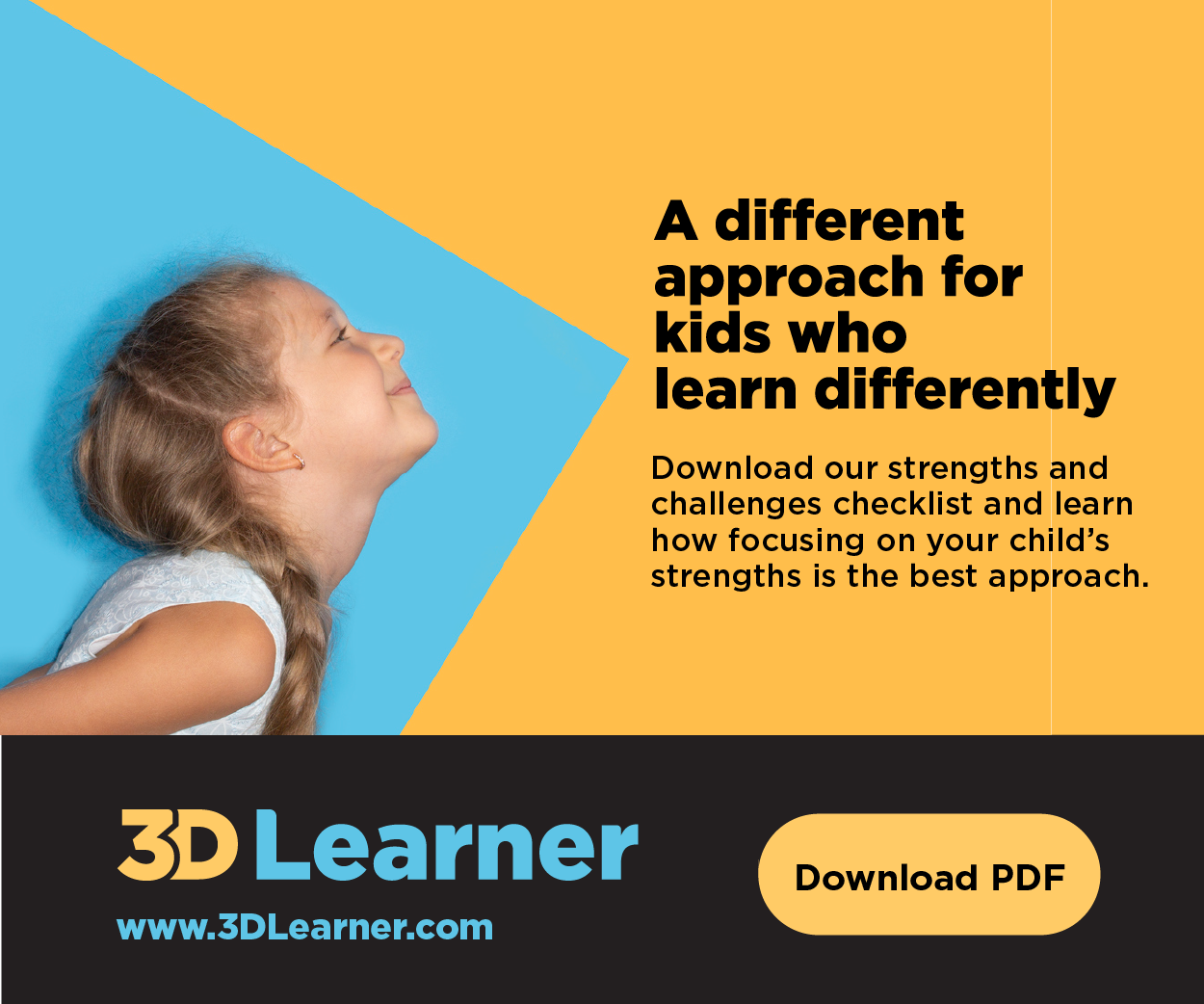
At 3D Learner, we want to better understand your challenges, offer advice on how you can help your child and if appropriate, share how we can help. If you would like a no cost conversation you can either call us at 561-361-7495 or click here to schedule a How Can I Help My 4th, 5th or 6th Grade Child conversation
3D Learner, Committed to Transformational
Strength Based Parenting
That Makes The Difference for Your Child and You

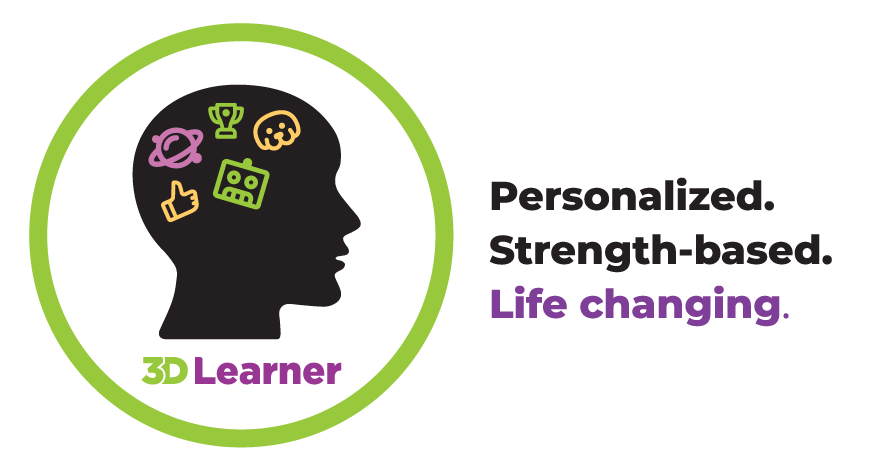
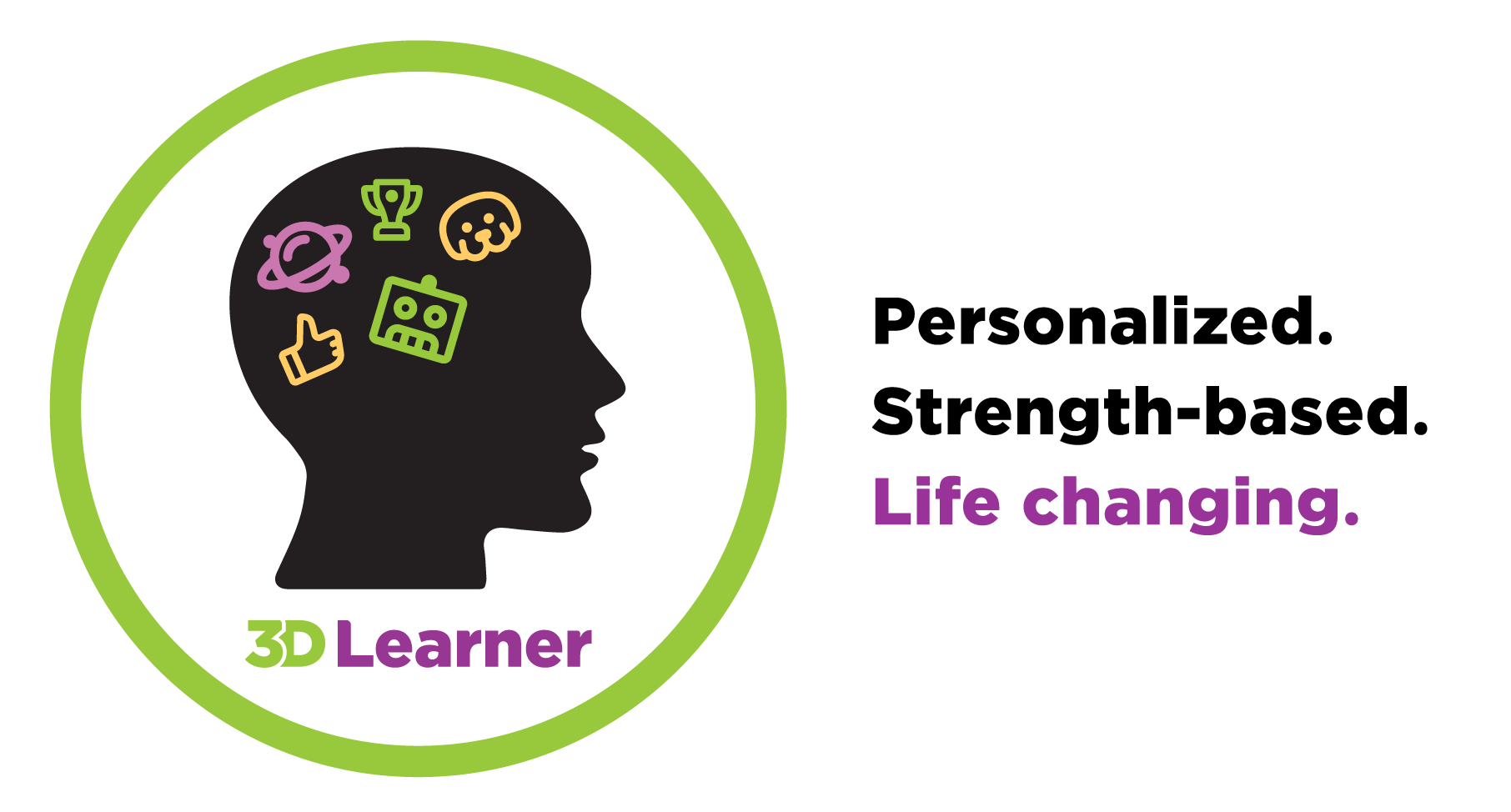












Recent Comments